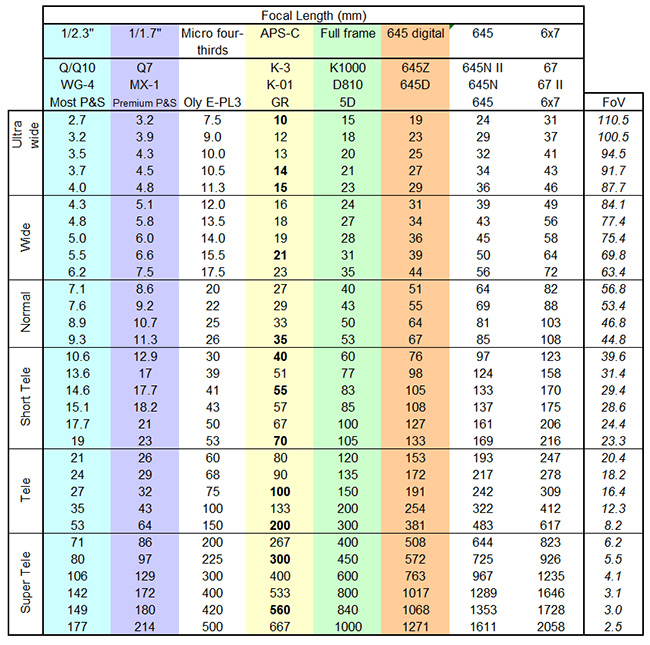 Originally posted by kaseki
Originally posted by kaseki 
Two points.
(a) My understanding is that all recent Pentax 645 "digital" lens assemblies that include "FA" in their designations can fully cover the exposed 120 film plane area of the 645 film cameras. I definitely would like to know if that is not true.
(b) My second understanding is that the term "normal" was intended to yield (when printed) the same perspective of objects in a cluttered field as the human eye does. This tends to be a bit short of the focal length deemed optimal for portraits, where too close yields obvious facial distortion, and too far tends to lose depth cues. This may be due to conversational distances being shorter than nature observation distances.
A. I don’t think the DFA lenses cover the film format, but others will know those details better than I. I guess I’ve never fitted my two digital-era lenses to my 645NII.
B. “Normal” is strictly a convention. Large-format photographers describe focal length as “short”, “normal” or “long”, just as a convenience for discussion. Perspective is entirely controlled by camera position, and focal length only controls how much of the scene will be included in the image from that position. For portraits, long lenses require longer distances (if you want more than just the subject’s nose in the picture), and when viewing a small piece of a scene from a long distance, perspective will seem compressed. But the lens is merely constraining possible camera positions, and camera positions are doing the work of perspective relationships.
“Wide angle”, “normal”, and “telephoto” have to do with lens design, not focal length in relation to format. Wide-angle lenses have wider coverage relative to focal length, which is needed by shorter lenses and larger formats. For SLRs, they are also retrofocus, meaning the distance to the rear node is longer than the focal length, which makes a short focal length possible in front of a deep mirror box. A telephoto lens has a distance to the rear node shorter than the focal length, making fitting on a shorter bellows possible. Normal lenses are often wide-angle designs to accommodate camera movements.
Fora camera like the 645z, I think in terms of short and long, and normal is just a convenient label.
Rick “not normal” Denney








 Similar Threads
Similar Threads 











 Post #12 by rdenney
Post #12 by rdenney








